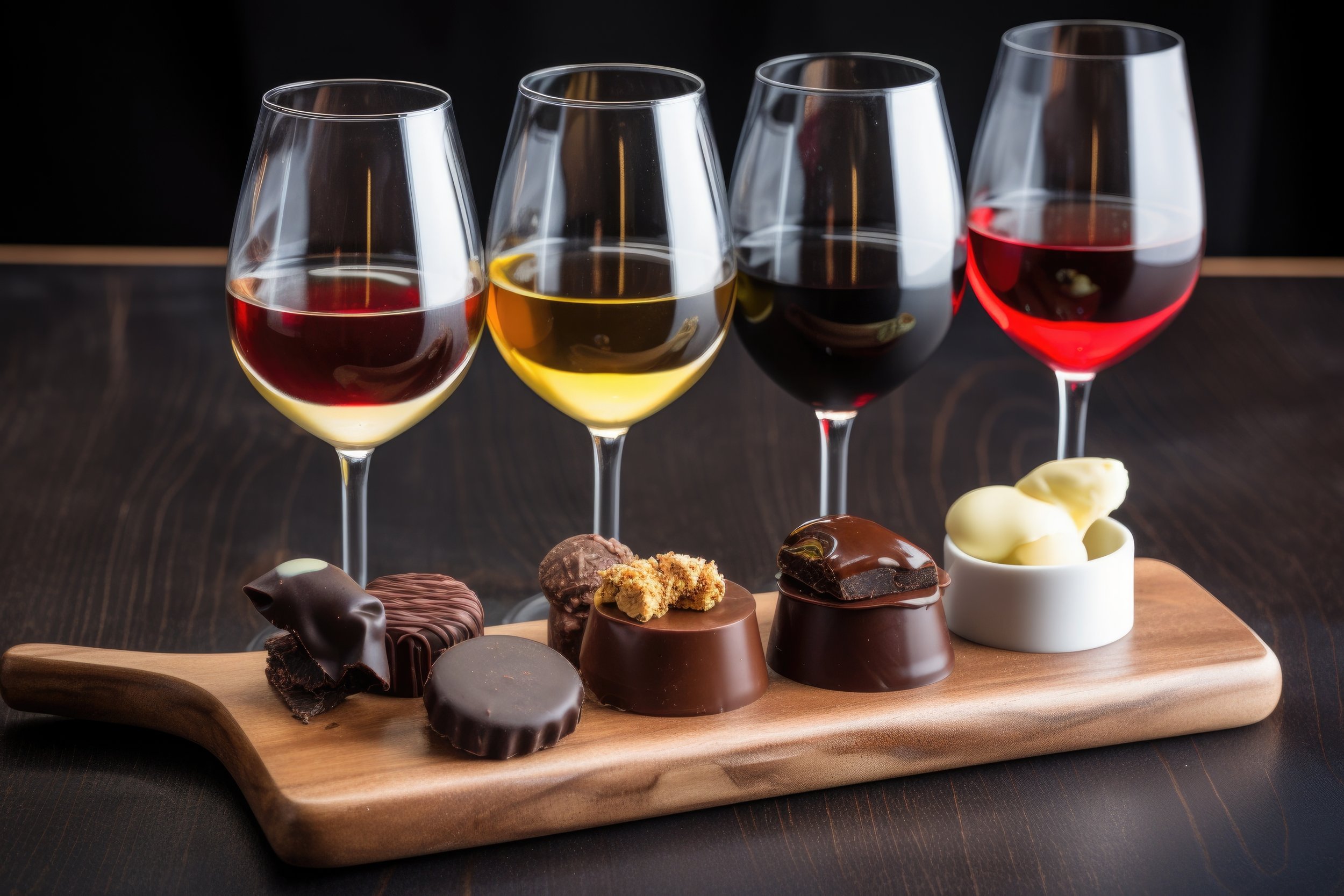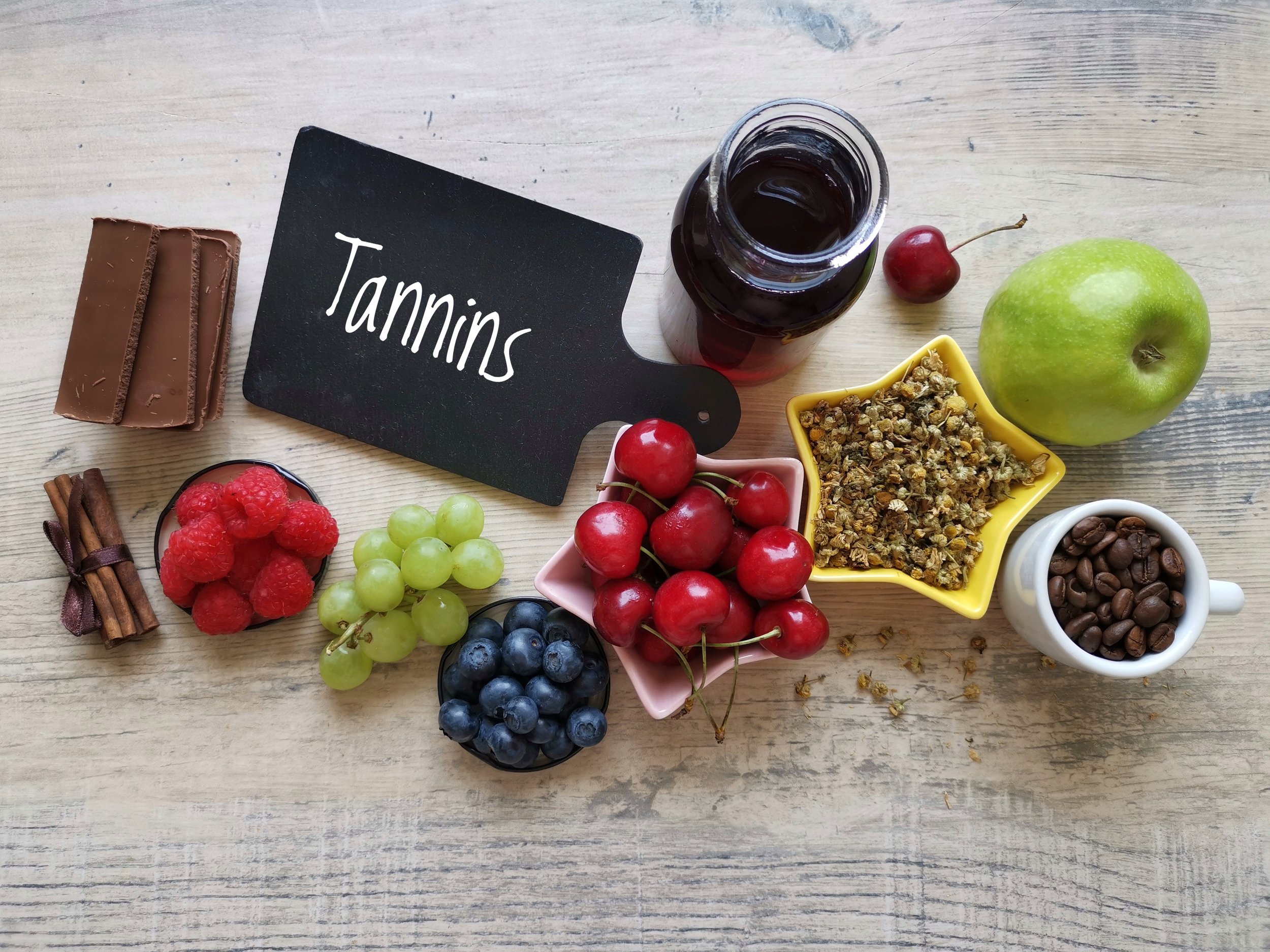Wine & Chocolate: Friends or Foes?
Wine and chocolate seem like a match made in heaven. An all-time favorite combination for Valentine’s Day gifts or to show someone special that you really like them. But a common complaint is that the dynamic duo can often fall flat. Something that was meant to be delicious seems to step on the toes of one another or duking it out in a boxing match. In the end, it just isn’t pleasant. Why?
Flight of wines with common chocolate counterparts
Tannins
“Tannins” is a term often exclusively associated with wine. But did you know that chocolate has natural tannins, too? Tannins are “naturally occurring phenolic compounds found in many kinds of plants, including grape’s skins, stems, and seeds.” These compounds are integral in the texture, balance, and structure of the wine. The more tannins in the wine, the more you may be tempted to pucker your lips because of how dry the taste may feel in your mouth. Depending on the wine, you may get different tannins from astringent to mildly sweeter.
In chocolate, tannins are a little bit different. Tannins in the cacao bean is the main contributor to the bitterness we often taste in dark chocolate. The reason we don’t get the same bitterness in milk or white chocolate is that the percentage of cacao pulp used in these products is either non-existent (in the case of white chocolate) or make up a small percentage (milk chocolate).
So, when we combine the astringency of wine with the bitterness of chocolate, we are more apt to pass on a pairing.
Terroir
“Terrior” is another fancy word that we received from the wine world. Simply put, terrior is the place where wine is produced. Encompassing all that goes into manufacturing such as climate, soil, elevation, etc. this term can be used loosely and can easily extend to chocolate. Terrior becomes important to pairing because where a wine or chocolate are produced radically changes the way it tastes.
Wine and chocolate are both grown in two different types of terrain. While chocolate thrives is more tropical areas, wine is best at higher elevations. A chocolate from Africa may not be a good pairing with a wine from Chile. Why? Because the terrior are contradictory rather than complimentary. African chocolate are characterized for being more sour or acidic while wine from Chile can range in flavor from raspberry to tobacco.
How to Decide?
A few weeks ago, we were fortunate enough to put some of our pairing skills to the test. We have ten unique flavors for our chocolate, and it can be a puzzle to know which chocolate is the best fit for a wine. We were provided with six different varieties of wine, ranging from Shiraz in the Barossa Valley in Australia to sweet dessert wine from Dolce in Napa Valley, California. To create an excellent pairing on the fly for our soon to be arriving guests, we did the following:
1. We tasted the wines first. Sniffing, swirling, and sipping, we wanted to get the full range of the wine.
2. We asked ourselves what we tasted. Fruity? Sour? Woodsy?
3. We wrote the notes down and compared them. Each palette is different, so having three different tongues available gave us a better idea of what we were experiencing.
4. We debated and deliberated.
What we found is that the general rule of thumb with pairing wine with chocolate applied. For sweeter wines go with a sweeter chocolate. With the deep reds go with darker chocolate. What works for us is that all our chocolate is 70% and rather than competing, it tends to compliment all the wines we have paired so far. Some pairings are much better than others.
Our Favorites So Far:
Cherry Chocolate & Shiraz from Barossa Valley, Australia
Coconut Chocolate & Dolce from Napa Valley, California
Classic Chocolate & Carmenere from Macedonia
If you are looking for a fun at-home wine pairing, then make our favorites your next one. Over the course of the last few years, doing so many wine pairings and tasting hundreds of wines, we know that these won’t disappoint. And it’s better than the Hershey Bar and that ten-dollar Pinot Noir you grabbed from the grocery store, right?



